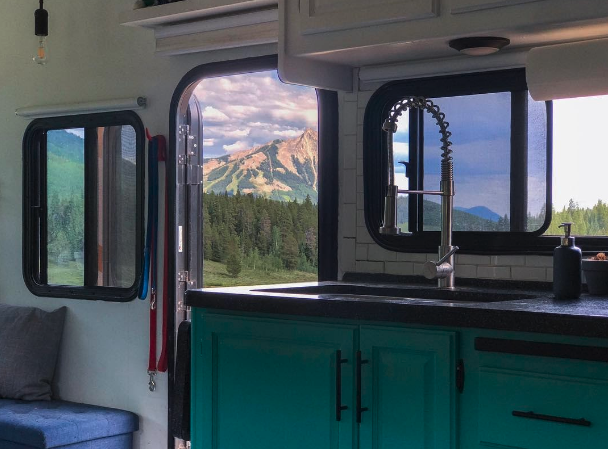RVs make for the ultimate road trip vehicles, allowing owners to bypass hotels, restaurants, and other costly vacation expenses. This can make vacations more affordable, fun, and convenient. For these reasons, more people than ever are hitting the road in their tiny vacation home on wheels and loving every second of it. However, this freedom and relaxation comes at a price.
The average RV can cost anywhere from $50,000 to $1.5 million and most people don’t have the means to purchase an RV outright, so they look to financing options to make their dreams come true. With an expenditure of this size, it’s crucial to know all of the details before you commit. Financing an RV is a big life decision and should be treated as such.
Consider these five principles before taking out a loan on an RV.
1. Securing funding for an RV loan could be difficult
Before obtaining a loan, it’s best to have the mindset that you are purchasing a second house. If you’ve ever purchased a home, you understand what a hassle securing a loan can be. Purchasing an RV poses an even bigger challenge because it’s considered a luxury loan. Unlike an auto or home loan, it is not a necessity, so lenders do not hand these loans out as easily. But don’t worry! Securing a loan can be tricky, but it is not impossible. Lenders look at a variety of factors when determining loan eligibility.
2. RV loans can look a lot like mortgage loans
Additionally, please know that your total monthly payment could be fairly high, similar to a mortgage. It will vary based on a number of factors, including sale price, total cost after your down payment, interest rates, and more. It will likely not be as low as an auto loan, but an RV is an investment and is surely worth the overall cost.
3. Depreciation could mean you owe more than you paid for your RV
Just like cars, new RVs depreciate tremendously in the first year of ownership. Brand new RVs lose fifteen to twenty percent of their value as soon as they’re driven off the lot, and this can be rather hard to swallow. Buying a one to three-year-old RV can help reduce the initial depreciation, while still often getting the feel of a brand new vehicle, but with a significantly-lowered cost.
Still, interest rates and continued deprecation mean that, over time, you will likely pay back more than just the RV’s sale price, just as you would with a mortgage or car loan.
4. There are many types of RV loans
Your RV dealership may be able to secure a loan for you, which is often the easiest approach, but this is not your only option. Be sure to do all your research and consider a few loan companies before making your final decision. Dealerships, banks, credit unions, and online lenders all offer RV loans. Be sure to review rates and terms from a variety of sources to ensure you are getting the best long-term deal.
5. You will need to show lenders that they are making a good investment
If your RV is totaled in an accident or suddenly needs costly repairs that you cannot afford, the lender may lose a substantial amount of money. For this reason, you may need to show lenders that you are willing to protect their investment with a few important steps.
First, you will likely need to purchase an RV that is in good condition. Typically, your lender will want to see a full inspection report (provided by most dealers), as well as a list of past and future maintenance. In addition, loans are usually only offered for RVs that are ten years or younger. This is because younger RVs are less likely to experience extensive mechanical failures that could result in a loss for the lender.
Buying a warranty could help lenders to see that you are serious about protecting your RV. Many RV warranties will protect your rig bumper to bumper for three to five years, or a certain amount of miles. The warranty price can often be rolled into the total loan amount, protecting your new rig and increasing your chances of securing a loan.
Lastly, most lenders will require you to insure your new RV with both comprehensive and collision auto insurance. This will protect your RV to the highest extent, ensuring that it is protected, even in the event of an accident caused by the owner. This will be fairly costly but will likely be less expensive than comp and collision insurance on a car that is driven daily.
Obtaining financing for your RV is no small choice and should not be taken lightly. Future RV owners should plan to do lots of research before shopping for their new rig. And once you’ve found the perfect RV, be sure to consider any and all options and scenarios before securing a loan. Planning ahead can save you time, money and frustration in the long run when financing the RV of your dreams.





